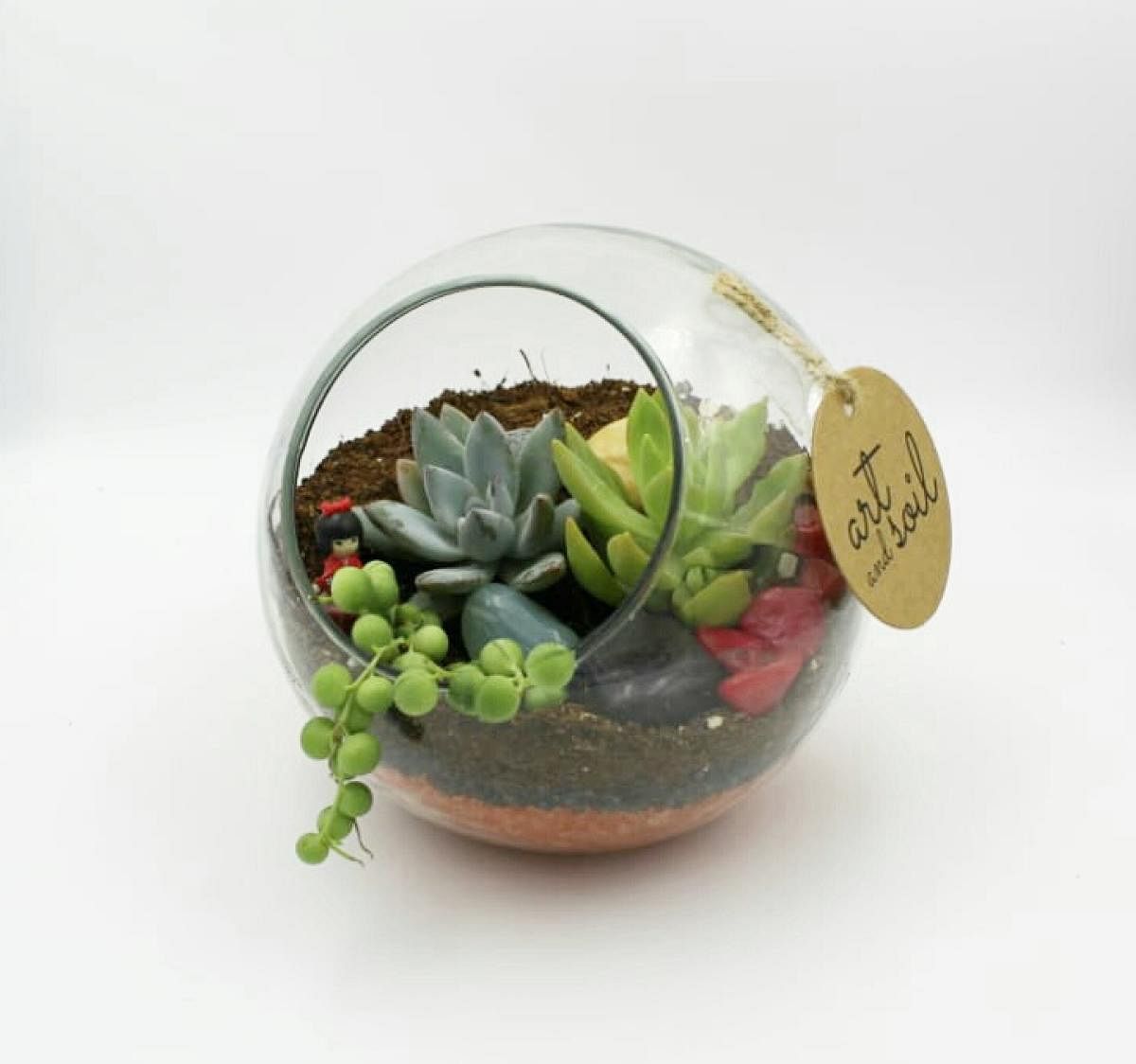
Moving to a bigger city, Vinita Misra found that it was a great challenge to build an indoor garden. While searching for a way out of this problem, she was introduced to the concept of terrariums -- creating a micro eco-system inside a glass container, filling it with soil and plants.
“I’m fond of creating things which are naturally beautiful and have an aesthetic appeal,” she said. “But since we live in urban jungles where it’s difficult to have garden spaces, I started growing ornamental plants like succulents and smaller plants inside terrariums.”
The advantage of having terrariums is that their maintenance is easy and they occupy less space, making them perfect for indoor gardens and home decor. There are endless possibilities when it comes to adding design elements to these mini gardens, she said.
Creating a terrarium is very simple. The materials required are a glass bowl, pebbles and stones, soil, cocopeat (the dry outer layer of a coconut crushed into a soil-like substance), vermicompost, sand, some succulents and decorations like figurines.
grown inside terrariums.
The pebbles make up the first layer, she said. This is to create a level of drainage for the excess water that comes from the soil. Since succulents and cacti don’t need much water, the soil should always be dry.
Next is a layer of moss and charcoal to prevent the bad odour of certain plants from spreading. After that comes a layer of soil which is a mix of 70 per cent cocopeat, 4-5 per cent vermicompost, sand and soil. The succulents and cactuses, based on how decorative and colourful they are, can be planted.
“On top of this, I decorate it with tiny houses, coloured pebbles and stones. I also buy figurines of animals and people from Amazon and use these to liven up the terrarium further,” she explained.
Terrariums need to be watered only once in 10 or 15 days. The plants should not be watered. Instead, the water should go into the soil.
“Making a terrarium can cost anywhere between Rs 850 to Rs 3000. There are kits which contain all the materials required for a terrarium. But creating it from scratch is a little difficult as shops don’t sell these items in loose. For instance, if you want to buy pebbles, you will need to get at least 100 or 200 grams. You cannot buy just three or four,” she said.
With an intention to share her knowledge about terrariums, Vinita has set up ‘Art and Soil’, a home decor brand in Yelahanka. She also conducts regular workshops in her studio.
“In fact, ours is an ‘Open Studio’ where anyone can drop by any time and take up a terrarium project of their choice,” she said. She imparts free training as a part of environmental awareness drives.